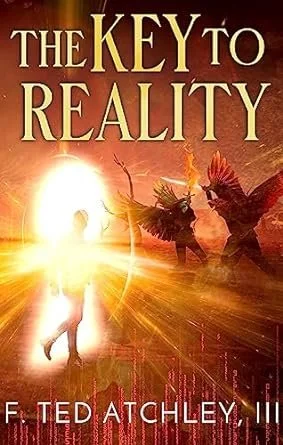SPSFC 3 Author Interview - F. Ted Atchley
1. event, piece of media, or a speculative scientific idea?
The Matrix (1999) provided the initial inspiration for my story world. You can see a light Matrix motif near the bottom of my cover and I named one of my characters Tom Anderson has an homage to the movie.
2. How did you approach the creation of your main characters? Were they modeled after real-life figures, or did they evolve organically as you explored the world of your story?
Brandon, my main character, evolved over each succeeding draft of the novel. I knew little about him during the first draft, and he even had a different name. I start with the character’s arc. I ask myself what they need to learn through this story, and build them out from there.
3. Science fiction often delves into questions of ethics, technology, and humanity. What central theme or moral question does your story grapple with, and why did you feel it was essential to explore?
My goal is to entertain with fantastical tales that hold deeper truths.
I write for people who are just like me. People who think they belong on the Island of Misfit Toys. They believe they will never measure up and never be enough. Individuals who have experienced marginalization, rejection, or neglect. They may feel like they don’t have any potential. Broken. Purposeless. Alone.
Brandon battles these same issues.
4. How did you approach the integration of futuristic technology or scientific concepts in your story? Did you base them on existing theories or let your imagination run wild?
Brandon is a cybersecurity expert. I relied heavily on existing cybersecurity technology. In addition, I had the novel’s content reviewed by a cybersecurity analyst prior to publication.
For some of the more fantastical aspects of the story, such as the alien denizens of another reality, I let my imagination run wild.
5. The sci-fi genre provides a canvas to depict diverse cultures, species, and worlds. How have you incorporated representation and diversity in your work, and why do you think it's vital for the future of science fiction?
While it is not a central theme of my novel, I made Brandon a person of Hispanic and Asian descent. Despite the absence of those specific identifiers in the alternate world of my book, the portrayal of Brandon and his parents should evoke those same ideas. For example, Brandon’s father’s name is Jihoon.
I believe it is vital to display a wide range of representation in science fiction and fantasy. As the characters become more diverse, so, too, will the audience. This will allow science fiction and fantasy books, comics, and other media to broaden their appeal.
6. Every author has a unique writing process. Can you share a bit about yours? How do you manage world-building, plot progression, and character dynamics in such a complex genre?
I wrote The Key to Reality as I progressed through the “Your Novel Blueprint” course from 21-time New York Times best-selling author Jerry B. Jenkins. He walked me step by through the process, starting with discovering my main character in what he calls the Greyhound Bus exercise.
In addition, the Scrivener software tool was a great resource to keep track of details like names and places while building my story and the world.
7. What's next for you after SPSFC? Are there any upcoming projects you can share with us?
I am currently working on a fantasy trilogy. At the Realm Makers Writer’s Conference last year, agent Steve Laube challenged us with a question. If you could only write one book in your entire life, what story would you tell?
This current project I have started is that story. I can’t wait to share it with you.


